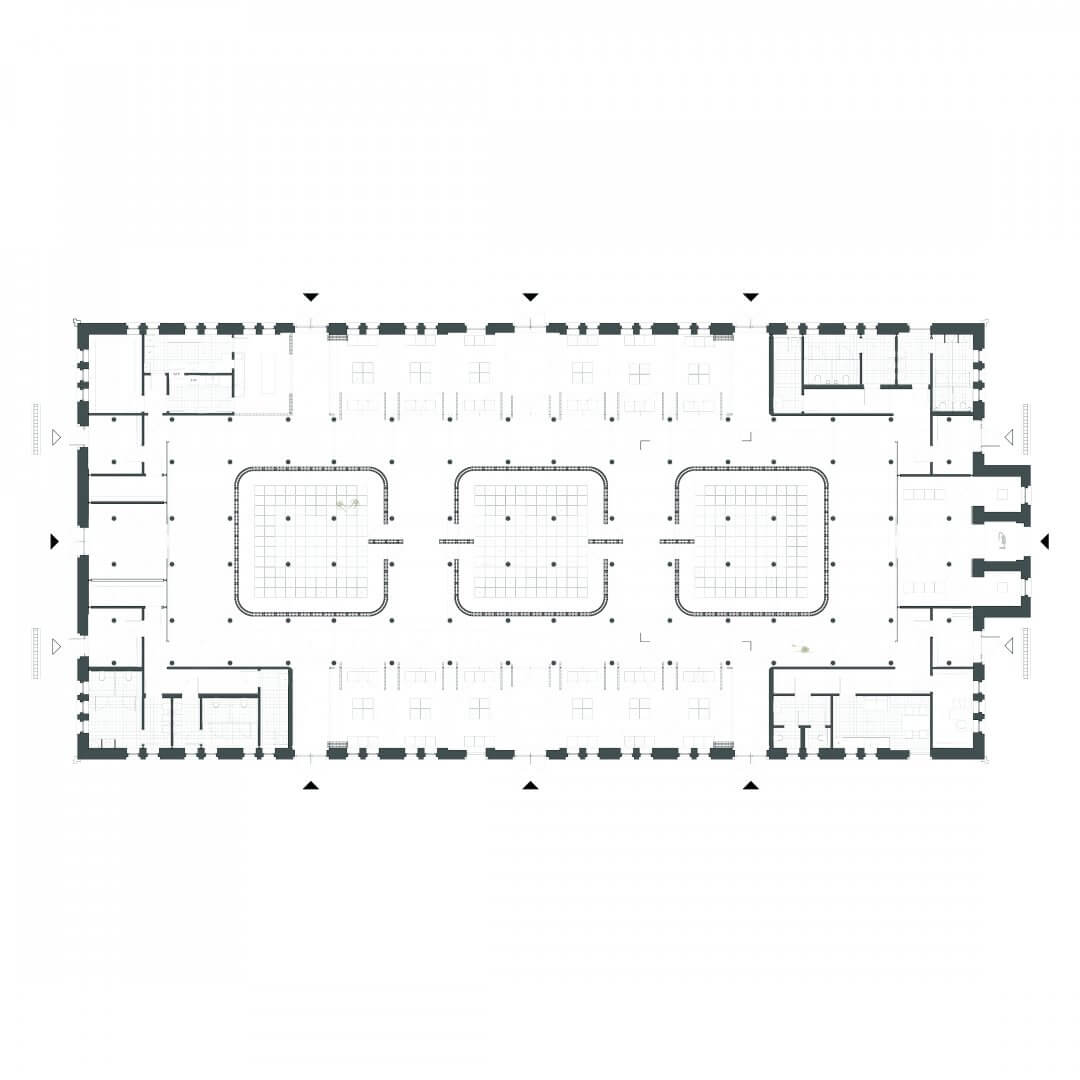Wiktoria Terek
Aim of the project is to create a multifunctional space to raise awareness about the importance of bees in the ecosystem and space to learn about them.
In my dissertation entitled “How to survive? Bees as the heart of the ecosystem. Repurposing of the interior of the Old Slaughterhouse Market Building “, I wanted to create a place dedicated to education and popularisation, which offers comprehensive solutions for programmes aimed at raising public awareness of the threats to the lives of bees and, consequently, to humans, and which also offers certified organic bee products. My aim was to familiarise people with pollinators and to change the negative stereotype – the bee only stings and buzzes. The ever-growing ecological problem related to the dramatic situation of bees in the world was the impulse to formulate the question “how to survive?” and to create a space that would not only raise awareness of its scale but provide a solution to this question.


In my conception I created a place intended for audiences at every level of education, both for those who do not necessarily want to get involved in beekeeping but who would like to acquire basic information, as well as for beekeeping enthusiasts and scientists. I wanted to create a place that would bring the citizens of Poznań into contact with local beekeepers and offer mead in order to cultivate Polish traditions, help beekeepers win customers and counteract adulteration of honey. The Old Slaughterhouse market building belongs to the complex of the former municipal slaughterhouse located in the very centre of Poznań. By placing a project addressing the ecological aspect of the decline of the bee population inside the slaughterhouse, I wanted to make visitors aware that at this point, if we do not change our behaviour towards the insects, we are dooming them to a fate similar to that of animals destined for slaughter.



Bees have a specific system of action when they build. Several characteristics can be distinguished in it, such as modularity, the creation of vertically levitating structures with as little interference with the existing environment as possible, the creation of “architecture within architecture”. This inspired me to make specific design choices for the space. The concept is to renovate the building with the restoration of concrete on the floor and plaster on the walls. The idea of creating structures with as little interference with the existing fabric as possible meant that due to the existing detailing in the form of arches on the poles, the created walls do not reach the ceiling. I decided to obtain the effect of detaching the created vertical divisions from the floor and the structural walls by applying I-beams at the interface with the existing structures. I included the creation of architecture in the architecture in three central forms – the honey supers, which, like in the beehive, have the most important function in the building. They have an educational character and are an important element of the aesthetic experience. Referring to modular honeycomb construction, I took the fundamental architectural module – the square – and used it to create structures in the building space.
I designed the interior of the building according to the axial layout of the building. I included load-bearing poless that give rhythm and floral specificity to the space. Due to the diverse narrative, I separated nine functional zones in the building: entrance, communication, educational, catering, shopping, hygiene, technical facilities, back-up catering, social. I wanted to ensure clear communication and make it possible to temporarily change the function of the shopping and catering zones for the Saturday bee market. In the transformation zones of the space’s use, I designed furniture forms that slide out from under the floor. They play the role of storage, exhibition and enable consumption by the gastronomy customers as well as the purchase of products from the self-service shop. During the market, they form stands for beekeepers. In the educational area, they allow different types of education. Forms appear for the duration of a particular event, adapting the space for honey and mead tasting activities, beekeeping workshops and lectures on ecological issues. The main entrance to the building was particularly important to me. Like the hive entrance, I wanted it to be a mysterious part of the interior. I separated it with a glass vestibule, filled it with the sound of a bee swarm and placed displays with the shop’s assortment and honey-vending-machines with small bee products.






Honey, its texture, the cultural connotations associated with bees and their disappearance from the ecosystem were the inspiration for the colour scheme in the interior. In order to minimise the carbon footprint, I used local products to finish the project – reduced CO2 concrete, acacia wood, clay plaster, copper, ceramic products. I covered the exterior walls in the interior with a manifesto about bees in three languages in sgraffito technique. Honey-coloured glass bricks form the structure of the honey supers. I soundproofed the interior with acoustic panels containing dried field flowers in their structure and hung honey-growing vines under the skylights.
Author: Wiktoria Terek.
Location: Poznań, Poland.
University: Magdalena Abakanowicz University of the Arts Poznań.
Year: 2023


